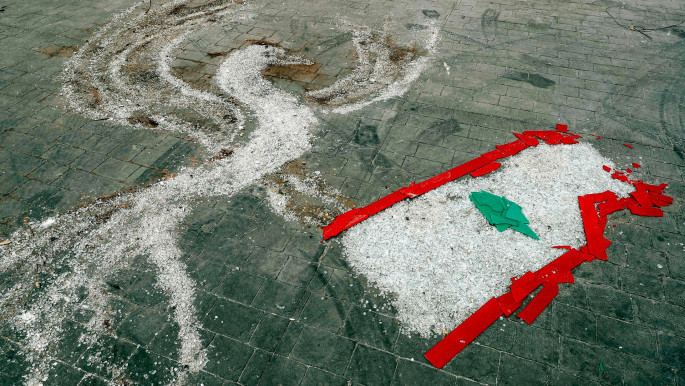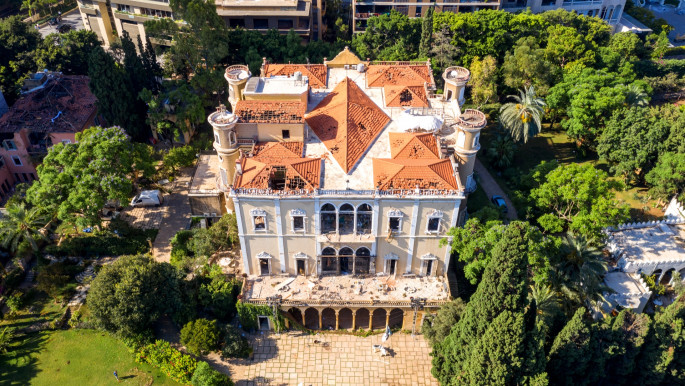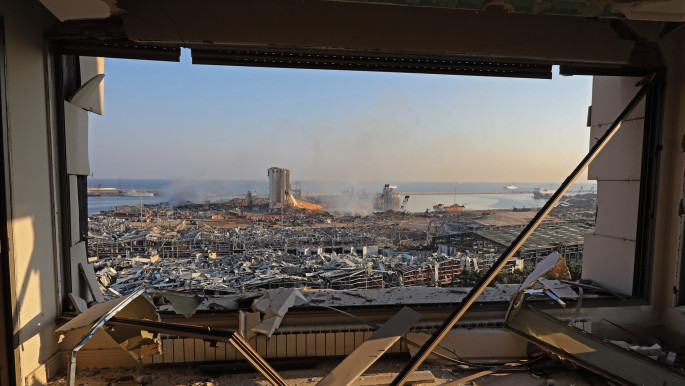Before a memorial to the port explosion, Beirut needs to heal
For many, then, it may seem inappropriate that discussions are underway to build a memorial site to honour the victims of the devastating blast.
Memorials across the world serve as a focal point to remind people of a person or to commemorate a tragic or historical event.
Most, however, are usually built long after the catastrophe, a result of careful planning after people have begun to heal both their physical and psychological wounds.
In Beirut, with people still trying to repair their homes or reopen their businesses more than three months after the blast, news in November that a Lebanese architect was planning a memorial park came as a shock.
Carlos Moubarak's project aims to create a "dynamic and participatory, sensitive and spiritual memorial infrastructure in reminiscence of this tragic event", according to his website. The plans would include a green public park along the remaining grain silos and former quays where the explosion took place.
 |
What is important is for the people to recover their homes and activities. But after? I think we need a physical place for mourning and remembering |  |
The crater of the blast would become a "remembrance ring" – a circle of water surrounded by black concrete – and the space would integrate areas for cultural events and exhibitions, while allowing the rest of the port to function again as before, connected to the rest of the city by a pedestrian and cycle bridge.
"We clearly know that the priorities are now to focus on the short-term action plan, whereas our project, which on another level is as essential to the Lebanese people, should be apprehended on a long-term basis," Carlos Moubarak told The New Arab.
 |
|
| From helplessness to helping out: How Lebanon's diaspora is responding to the Beirut blast |
"At this stage, our objective is to rally the people around the initiative before taking the next steps. But for now, what is urgent is taking care of the people who got hurt in the blast, lost their homes and businesses, and still didn't receive any compensation."
Moubarak says the idea for a memorial site came shortly after the blast. "It was obvious. If you look where it blew up, this is the heart of the country's main port which is also so important in the national narrative," he explained.
"Moreover, the blast's surrounding area now left in ruins is one of the most historically charged, socially diverse and vibrant parts of the city, where a lot of different kinds of people live, work and party together," he said.
"If you add that within the context of Beirut, this is where there is the biggest concentration of buildings with cultural and heritage values, you have here a 'deep impact event'. Now what is important is for the people to recover their homes and activities. But after? I think we need a physical place for mourning and remembering that matches the scale of the disaster and reflects on the tragic event, a proper space to honor the victims but also to be dedicated to the survivors."
For Moubarak, it is important to connect this space to the city, which was one of the project's main urban challenges, the port being separated from residential areas by a highway, making it barely accessible. "Today, we absolutely need to preserve the silos, massive industrial equipment that is now and forever part of the Lebanese people's collective memory," he said.
 |
Carlos Moubarak's project aims to create a 'dynamic and participatory, sensitive and spiritual memorial infrastructure in reminiscence of this tragic event' |  |
The second week after the explosion, the Minister of Culture proposed classifying the grain silos as heritage important to the Lebanese people. "There is no question, it's not going to be destroyed and rebuilt as it was before," architect and heritage activist Youssef Haidar told The New Arab.
Working closely with the Ministry of Culture, he said that the blast area would, in fact, be adapted to a memorial space. "For now, the emergency is to protect heritage buildings, which we managed to do by 90% in four months, bring people back home and start a real work of restoration and strategic planning."
 |
|
| Read more: The battle to save Beirut's unique architectural heritage |
Studies are now being led about strategic urban planning that will involve most of Beirut, and not just the port. "We have to think about the heritage buildings, the urban fabric, the people, and the economic and cultural activities," Haidar explained. "Then we will launch a competition to choose the project that will be set up there. Of course, it follows a constant conversation with the people, because we cannot do anything without their input and consent."
So far, a statue is the only public tribute to commemorate the lives lost and shattered in the explosion. The artist, Hayat Nazer, was on her way from the airport to the capital when the explosion occurred. At first, she started helping people clean their houses with other volunteers and then ended up bringing back debris and glass to her home.
 |
It's way too early to think about it. We're just starting to put our pieces together, we have a lot of feelings. Anger, sadness, trauma |  |
She then appealed to local residents to gather "meaningful items" such as photo frames, broken clocks, and wooden chairs that were damaged in the blast to contribute to her artwork. The statue of the woman includes a clock that has stopped at time of the blast: 6:08pm, 4 August.
"Beirut is a woman in the mind of people," Nazer told The New Arab. "She was destroyed many times but also rose back. This version of Beirut represents our scars and our trauma, her hair is blown by the breath of the explosion because we're still reliving it. But she's strong, she wants to walk towards the future. It's the duality inside of us."
 |
|
| Read more: After Beirut blast, mental health is Lebanon's next crisis |
The statue had to be removed after it was damaged by people she says were "against the revolution". One year after October protests began in Lebanon it had become a symbol of the mass anti-government demonstrations.
Now, she is hoping to find funds in order to create a bigger sculpture and a place where people can visit to reflect on what happened. "We don't have a place to commemorate yet, but we really need one," the artist said.
For visual artist Noor Haydar, what is most important at the moment is for people to heal. "It's way too early to think about it," she told The New Arab. "We're just starting to put our pieces together, we have a lot of feelings. Anger, sadness, trauma".
"We also broke a bit from the feeling of unity from the Revolution, this strength we had seems to have disappeared under the rubble too. Imagine, we haven't even heard of the government still! We were discussing a while ago with other artists 'how soon is soon?' I think it really applies here."
Florence Massena is a freelance journalist based in Norway after six years spent in Lebanon. She reports on the environment, women's issues, human rights and refugees in the Middle East, Africa and Europe.
Follow her on Twitter: @FlorenceMassena

![sudan women [getty] sudan women [getty]](/sites/default/files/styles/image_330x185/public/media/images/5019D7F4-52AF-4377-8A05-885D27476479.jpg?h=d1cb525d&itok=tKXV7r-W)
